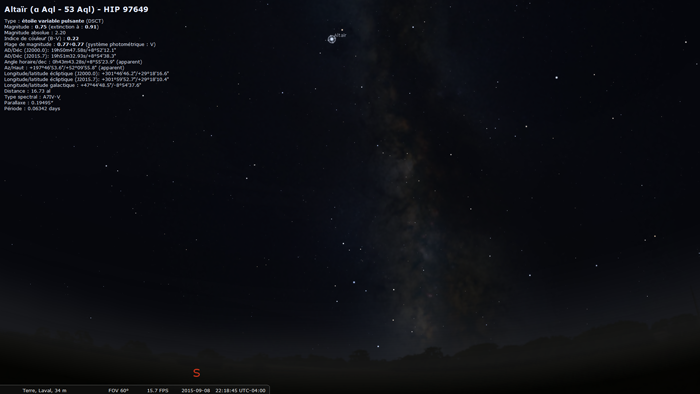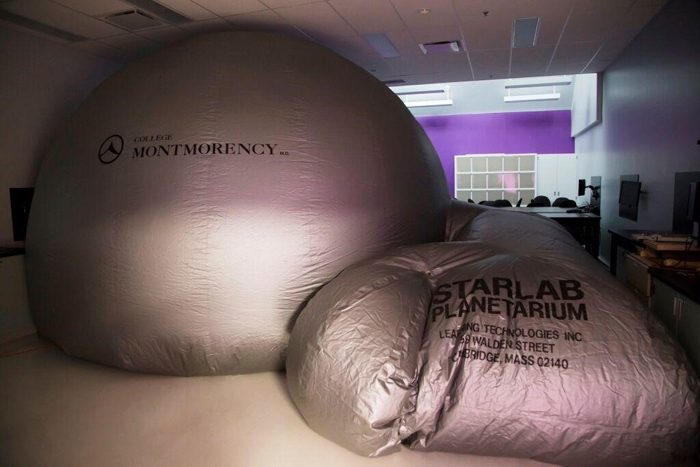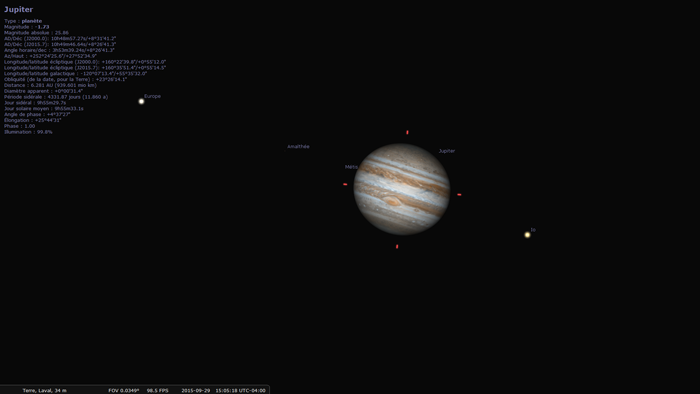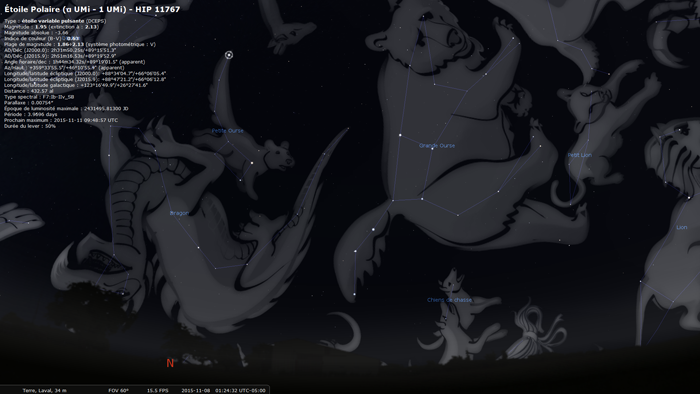On Using Stellarium: “There Is Nothing Wrong with Treating Yourself a Little”
Stellarium is a free, open-source planetarium software used to create dynamic 3D sky projections that imitate what a person would see with the naked eye or with a telescope. Among other functions, this software allows the user to obtain full views of the Milky Way and of constellations with their respective boundaries. It may be used at home for fun or instructional purposes, or in a classroom context, as was the case with my “Astronomie et astrophysique” class.

Altaïr and the Milky Way seen from Laval on September 8th, 2015, at 10:18 p.m.
Did someone say Lab?
“Astronomie et astrophysique” is part of the Natural Sciences program. The class objectives include:
- To recognize the sky using coordinates and the position of stars or clusters of stars in the sky
- To research a star in particular and evaluate its magnitude and luminosity
In order to achieve these pedagogical objectives, I could use photos and videos taken from a telescope. I can also use Stellarium, which is more interesting and captivating for everyone. Combined with a 16-foot wide planetarium – which accommodates 20 students- the software helps create a very realistic projection of the heavens seen from various sites around the globe, such as Taquile Island in Peru, or at one of the Mauna Kea observatories, on Big Island, in Hawaii. The dynamic nature of the Stellarium projections creates a spectacular and realistic visual effect. The students are very enthusiastic about the experience (and so is their teacher!). I sometimes have lab periods with a group of 20 students who are completely stunned by astrophysical phenomena, and this is quite motivating and exhilarating for everyone involved.

The inflatable planetarium

Jupiter and its satellites on September 29th, 2015
Pleasure is on the agenda
Using a piece of software that bolsters my lab periods while making both the teacher and students more enthusiastic about the materials isn’t a practice based on high pedagogical principles. It is simply a way for me and my students to have a pleasant time together. In hindsight, however, I can see that this practice contributes to student motivation. There is most definitely a ripple effect that results from this activity: When I am motivated, I am motivating my students which, in turn, motivates me again!
I think that loving what you do is one of the most important qualities for teachers. Once it is shared, their passion is a motivating force that incites students to get more involved in their learning process and to retain information longer. This influence transcends the boundaries of the school. Demonstrating a genuine love for what you do can encourage individuals to undertake all sorts of endeavours with the same passion and interest. When we look back at the teachers that have had the most influence on us, we can see that many of them were enthusiastic about sharing the knowledge that fascinated them. I do my best to inspire myself with these role-models when developing my own professional identity.
Spreading the word
I didn’t request and funding while developing this project, which required the Stellarium software and an inflatable planetarium. I was assisted by Mr. Richard Granger, a Technician from our Physics and Geology department. Mr. Granger helped me to create the 360° projection system inside the planetarium and supported me during my quest to master the projections of the sky powered by Stellarium.
Last year, I was able to train Space Camp counsellors from the Cosmodome in Laval so that they could use the college’s inflatable planetarium during their activities. I also presented several 10-minute workshops in the agora at Collège Montmorency during the “Quinzaine des sciences” science festival that was taking place within the college. For the occasion, nearly 300 students from different programs were able to gaze at the stars while learning a few basic fundamentals from Astronomy.

The Big Dipper, the Small Dipper and the Dragon constellations.
Have you ever used this software? Please feel free to share your experience with us!

